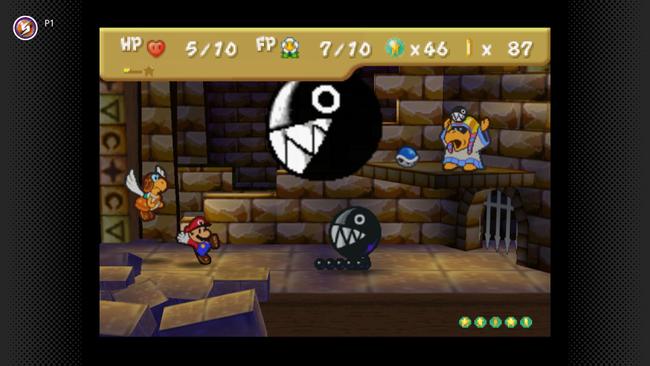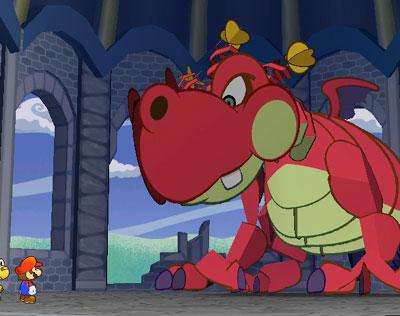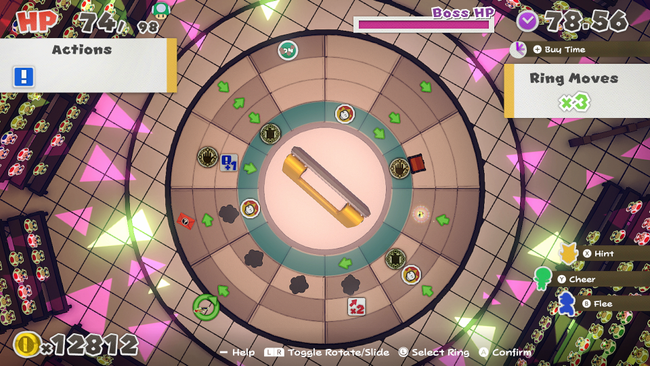
The next Paper Mario should lean into the series’ RPG roots
Super Mario RPG was an iconic mashup of Mario’s platforming adventure gameplay with the turn-based RPG mechanics popularized in the west by Final Fantasy and other popular series. The last Super Nintendo game released in the West, the console’s swan song was a critical and commercial success. While the game never bore a true sequel, gamers are due for a remake on the Switch later this year.
Even without a sequel, its spirit continued through two separate sub-series: the Paper Mario franchise from Intelligent Systems, and the Mario & Luigi franchise from Alphadream. Everything seems to be an RPG these days, but one of Nintendo's first and best-loved true RPGs was the one that shared the name of its most iconic platformer: Super Mario RPG. And the time is right for it to lean in on that quality again.
With the transition to the Nintendo 64, Paper Mario introduced an inventive paper visual style while retaining the tenets of turn-based combat, albeit simplifying it in some ways. Players controlled Mario in and out of combat, but players were not expected to manage an entire party. Instead, Mario would swap between allies to assist in battle. The sequel, The Thousand Year Door, built on this foundation. It added a small layer of complexity by giving Mario’s allies their own health to manage in battle. These games managed to embrace this visual design while balancing more significant RPG elements. The Thousand Year Door is still often considered one of the best RPGs of its era, but subsequent games in the series would begin to shift away from traditional RPG elements.

Super Paper Mario abandoned turn-based combat in favor of an action RPG with platforming elements, resulting in a game that was not much of an RPG, but was still incredibly fun and a well-written game. The games that followed - Sticker Star and Color Splash - would include turn-based combat, but with standard RPG components even further removed. Mario could fight endless enemies, but he didn’t have levels or other appreciable measures of growth. Instead, he would collect stickers, paint, or other items. These games did not lack for inventiveness, but continued to stray further from the simple yet nuanced combat systems in the series’ first outings.
Similarly, the most recent venture, 2020’s The Origami King, continued this trend. Boasting a truly inspired turn-based puzzle hybrid combat system, the game simply obfuscated too many of the RPG mechanics, almost as if worried that role-playing systems would scare off a part of the potential player base. While Mario starts with a set amount of hit points, the game regularly doles out hearts which increase Mario’s Max HP. Mario can purchase accessories, which provide permanent boosts or buffs during battles. The RPG mechanics are barely there, but stripped down to the minimum and removed from the grind of battle.

With the global success of the Mario movie, Nintendo could use this time to invigorate the series’ attitude, including leaning into turn-based RPG systems. The notion that complex gaming systems will scare away gamers is outdated, as even more casual gamers are unafraid of embracing RPGs - even ones with Mario, as demonstrated from Mario’s crossover tactical offerings on the Switch.
Nintendo should emphasize these elements in the next Paper Mario game, especially since the Mario & Luigi series appears to be on a hiatus. As the series shifted away from standard combat conventions, some elements of strategy have been either replaced or discarded entirely. A new title could implement newer versions of prior game mechanics - the Badge system from Paper Mario comes to mind - or further tweak the battle systems featured in recent games. Mario could exploit enemy weaknesses or execute powerful partner attacks in earlier games, rewarding players for savvy strategy.

A combat system similar to Origami King married to a more traditional RPG framework would provide a sense of progression through combat and a further incentive to continue to engage in combat at end-game levels. This would allow the developers to further innovate combat mechanics, offering players high-concept combat gimmicks and the hallmarks of progress which are both discernable and attainable.
The Paper Mario franchise is uniquely situated to reinvent itself yet again as the series’ 25th anniversary approaches. Embracing RPG elements in the next iteration will address long-standing complaints by series critics without stifling the series’ penchant for innovation. Relying upon the series’ rich history of creative and satisfying gameplay systems, Nintendo can reintroduce the series to gamers, making fans of both new and lapsed players alike.